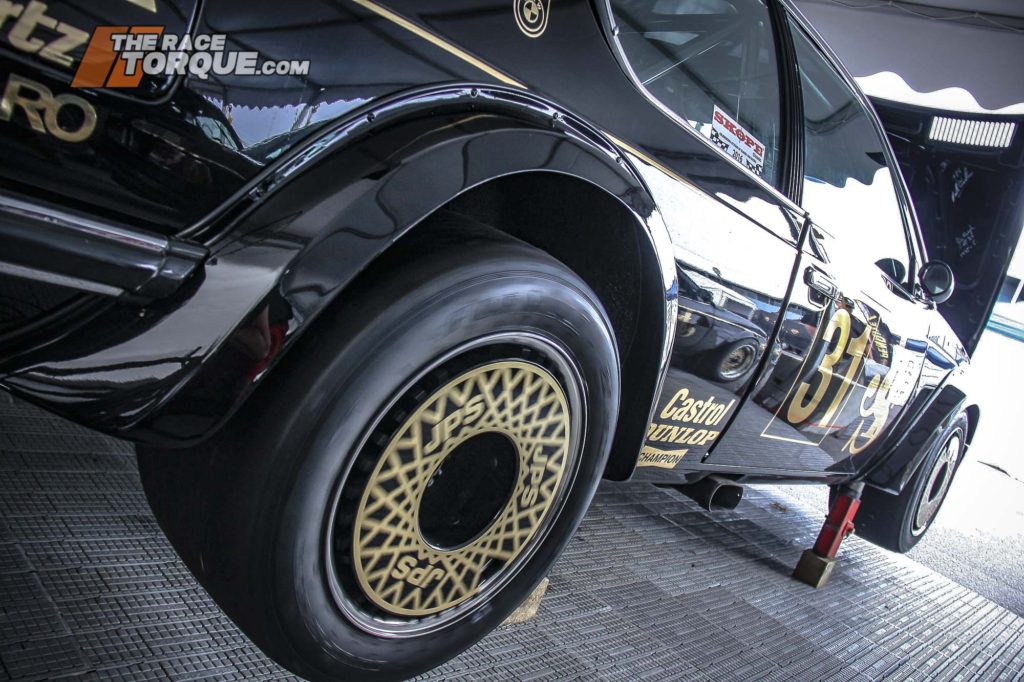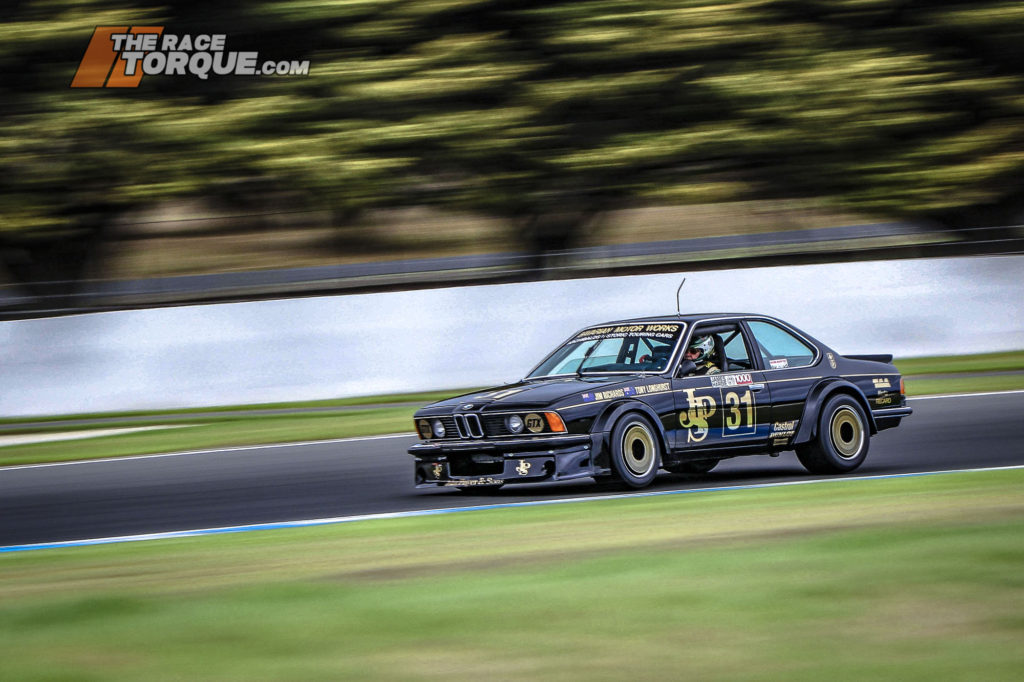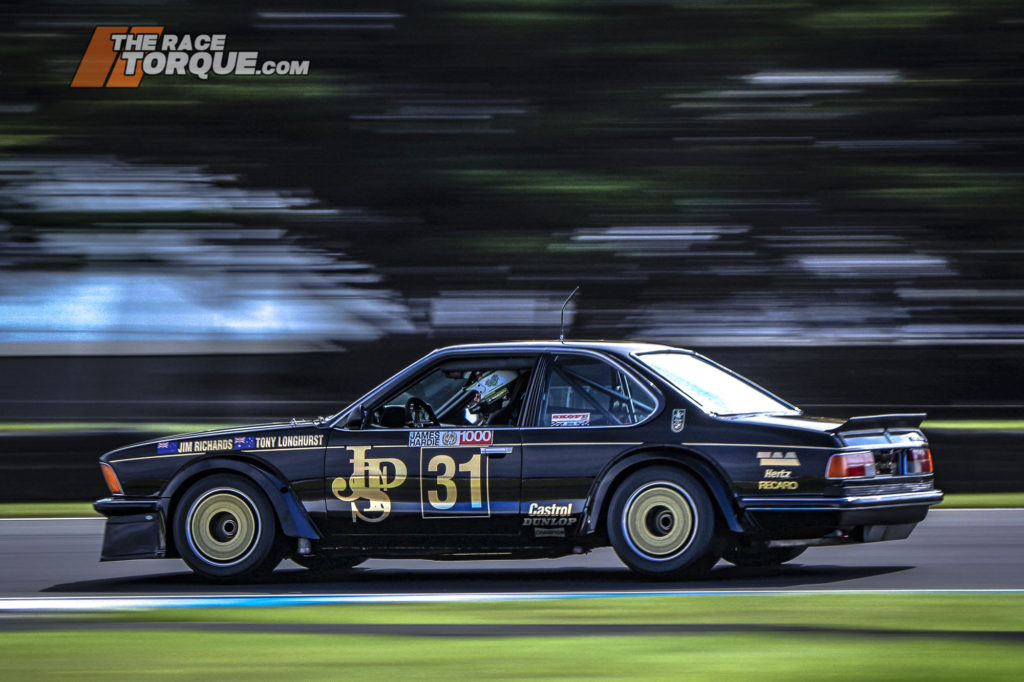UP CLOSE: The Group C BMW That Almost Never Was
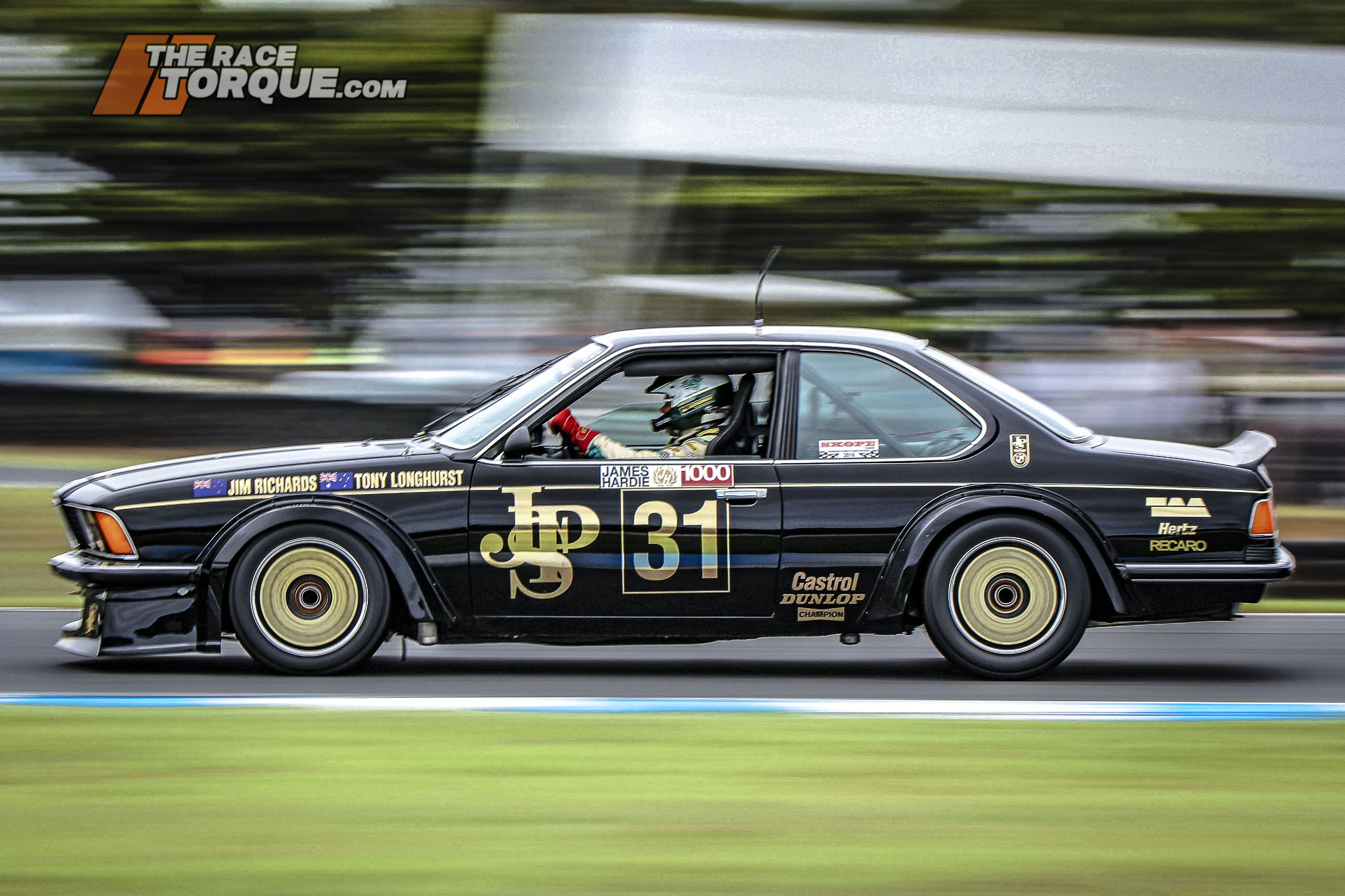
Sometimes, the legend of a racecar can stem from its presence, moreso than its on-track success.
Perhaps one of the more striking examples from the big wheels and flares Group C Touring Car era were the pair of JPS BMW 635CSis.
While rose coloured glasses often cloud the memories of the period’s parity politics, there is no doubting that the level of machinery at the class’s 1984 conclusion was simply awesome.
The fat stance, and in the case of the BMW, an unmistakable scream at 8,400rpm, the duo of Black Beauties continue to draw fans to the fences whenever they run in historic events to this day.
While significant wins would evade the Frank Gardner led squad of Allan Grice and Jim Richards, they were always in the conversation.
Along the way, there were ruffled feathers, protests, boycotts and more, with the team’s faith ultimately rewarded by the move to Group A regulations, where the Richards and his later spec 635CSi would prove unbeatable.
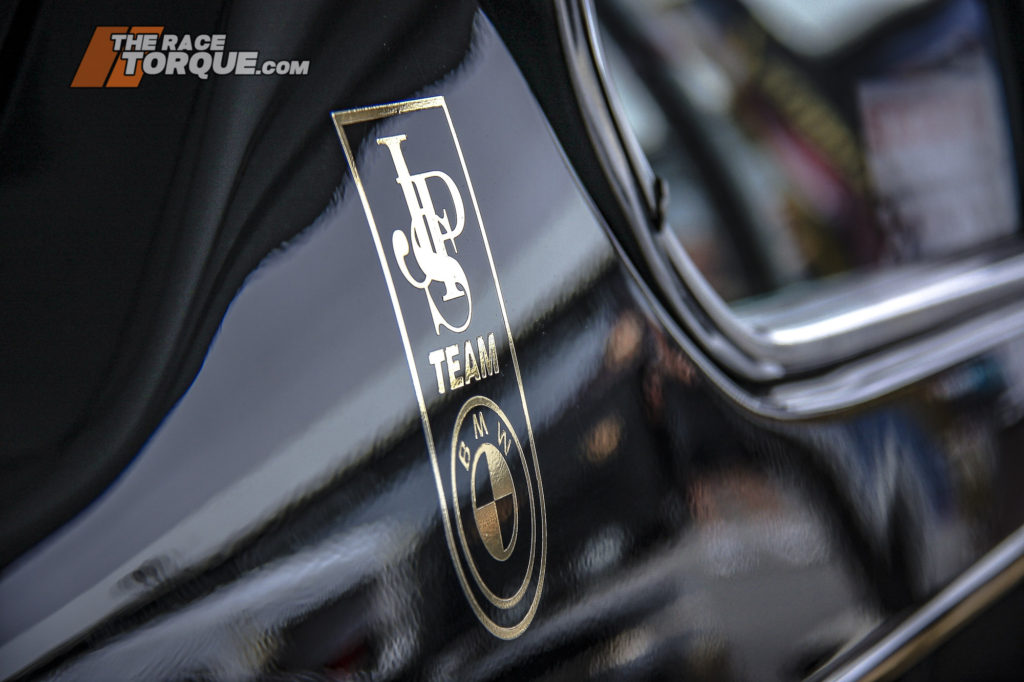
In the beginning, there was Grice
Allan Grice’s touring car and sports sedan outfit carried the colours of Amatil/W.D & H.O. Wills cigarette brand Craven Mild, with Gardner coming on board as team manager following the conclusion of his full-time driving career.
For 1981, Gardner took over ownership of the team, with two other major changes made in step with the move: BMW and JPS.
The iconic John Player & Sons black and gold foil livery, which debuted with the storied Team Lotus F1 outfit in 1972, brought the cars to life.
Later the branding would transfer to the somewhat less memorable Freeport and Benson & Hedges brands from 1988.
BMW also added some European flair to the Group C conversation.
While homegrown Holden Commodores and Ford Falcons comprised the bulk of the outright contending grid, there was an Asian influence with Mazda RX7s and the factory-backed Nissan Bluebirds.
From the USA there was a smattering of Z28 Chev Camaros, while John Goss had his Jaguar XJ-S.
With experience campaigning a turbocharged BMW 318i in Sports Sedan trim, Gardner and Grice headed to Europe with the task of securing a touring car to represent the brand Downunder.
They returned with a Group 2 European Touring Car Championship BMW 635 CSi, apparently a former press fleet car as prepared for competition by Werginz Motorsport in Austria.
The E24 6 Series in road car form had its origins in 1976 and ran through to 1989.
And it was successful in competition, too – at the time of acquisition, the model had already claimed an RAC Tourist Trophy at Silverstone, as well as the Monza 4 Hour.
Ultimately, under various rulesets, the model would be victorious in the European Touring Car Championship (three times), the DTM, the Japanese Touring Car Championship, the New Zealand Touring Car Championship (twice), with key wins in the Spa 24 Hours (three times), Nurburgring 24 Hours (twice) and the Macau Guia Race in 1983, with a one-two for Hans-Joachim Stuck and Dieter Quester.
Plus the Australian Touring Car Championship, two Australian Endurance Championships, an Australian Manufacturers’ Championship, and an AMSCAR Series, but all that was far down the track.
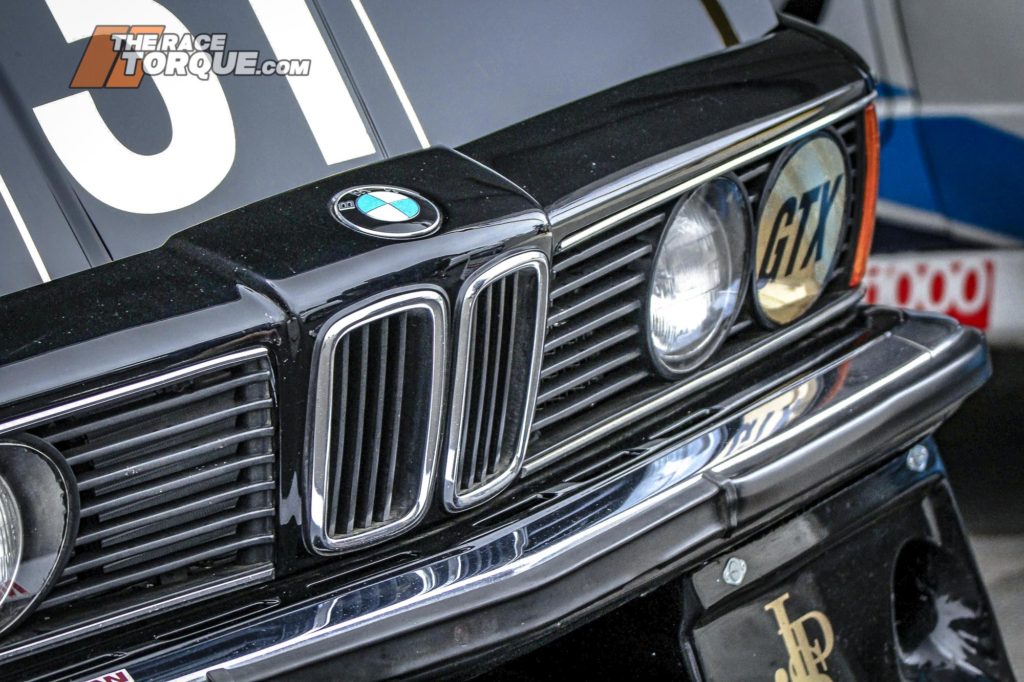
While not necessarily a sprint performer, the package was sound on fuel economy, plus it took care of its brakes and tyres, making it ideal for enduros – which would dominate the list of events the team would choose to enter.
For that initial 1981 season, much of the focus was on the local Better Brakes AMSCAR Series at Amaroo Park, with the Bimmer squeezing under the 3,500cc engine limit, precluding the big banging V8s from competing.
This in itself was a source of significant controversy at the time, with the ARDC lifting the cubic capacity limit that year up from 3,000cc, with the 635CSi essentially in a class of its own against the Ford Capris, Toyota Celicas, Mazda RX7s and RX3s.
The drama would peak at at the third round, where the BMW was subject to a 21 point protest from the Masterton Homes squad, with much focus on the car’s fuel injection system.
Reports at the time claim the JPS team were upset with the amount of time to disassemble and rebuild the car around its successful scrutineering inspection, while rivals claim that there was ample time for the crew to swap out the alleged offending parts prior to the check.
The BMW would finish the four-round series second to Steve Masterton’s Capri, with wins in the first and last rounds, and driveline failures at the start of the other two.
The car would make a lone Touring Car Championship appearance at big bad Sandown in April, where Grice finished second in both heats to Dick Johnson, an ominous sign for the opposition.
Grice was joined by long time TV talking head David Hobbs (ex-F1, Indy 500, Le Mans 24, NASCAR) for the car’s Bathurst 1000 debut.
After qualifying 12th, Grice charged through to fifth after 38 circuits, when he would bunker himself at the end of Conrod, dropping bulk time in the freefell back to 29th, six laps off the leaders.
When the race was red-flagged after 120 circuits for the McPhillamy Park melee, the team ran seventh, the first non-V8 on the leaderboard.
The car was fitted with a Racecam – perhaps Grice’s most significant contribution to the event was his live commentary from the scene of the stack. With the BMW safely parked amidst the sea of ambulances and recovery personal, Grice relayed live driver wellbeing updates to living rooms around Australia.
In fact, the presence of the Racecam may have prevented an even bigger accident, with the Channel 7 director able to warn Grice of the blockage over the radio during the commercial break, who waved down the cars behind him.
Elsewhere that year in the enduro races, Grice finished fourth at Adelaide International, retired with crash damage from Oran Park, finished seventh at Sandown and third at Surfers Paradise.
By season’s end, there were wholesale changes in the works at the BMW camp…
Grice commentating from the scene of the race-ending crash, Bathurst 1981.
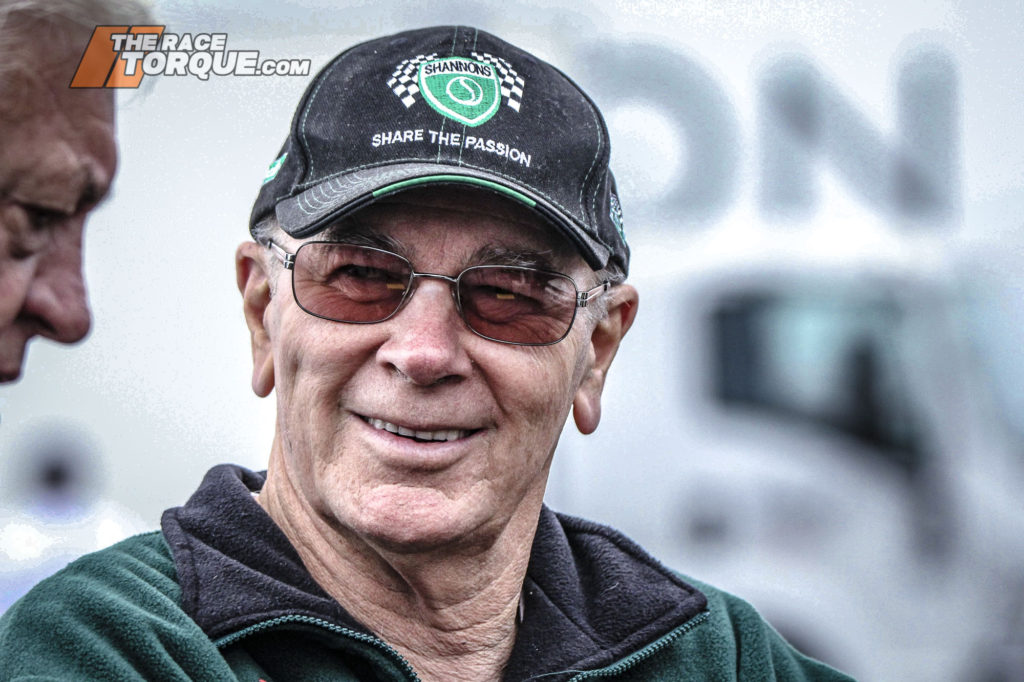
The 635CSi That Almost Never Was
With a Falcon Sports Sedan that was about to be superseded under the new GT rules, and only a HDT co-drive in his pocket, Jim Richards was looking at slim pickings from the 1982 season, possibly retirement at the age of 35.
However, the off-season rumour mill connected Richards with the BMW squad, with Gardner non-committal thanks to pending legal action resulting from the split with Grice.
Grice’s hard-charging ways didn’t sit well with Gardner, with the fallout causing considerable angst between the parties.
Ultimately, the HDT were understanding when Richards signed on with BMW– they were somewhat surprised Richards wasn’t scooped up for a top drive well before that time.
The squad kicked off the year with the legacy car from the previous season, although CAMS had stung the Bavarian flyer with a weight penalty on a homologation technicality, with the straight-six 3.5 litre, 310hp racer going from 1,280kg to 1,420kg, a prospect that simply wasn’t competitive against the big Aussie V8s.
While it was still a decent package in enduro form, and despite paperwork shuffles that in the end saw some weight shed, it was behind the eight ball in sprint trim. However, Richards did claim third place in his lone ATCC start at Surfers Paradise, following Peter Brock’s belated disqualification for using non-homologated engine parts.
Richards also appeared in the last two AMSCAR rounds, resulting in fifth and sixth from the CRC 300.
From there, Gardner formulated a plan to build a smaller 535 model with the 635 running gear, meaning the second 635CSi came close to never being in existence.
However, the homologation politics of the day required that BMW churn out the special edition M535i road car at volume as fitted with the 3.5litre power plant, a task not taken up by Munich.
It would have been a potent combination, which had the opportunity to have a major impact on the closing days of Group C.
Regardless, the local skunkworks set about building a new 635CSi, with a tight four-week program seeing the car debut at the ’82 Sandown 400, where the team overcame a broken wheel stud to finish tenth, four laps off the pace.
An interesting aside, despite the event being named the Castrol 400, due to TV constraints, the race was only ever scheduled to 338km… imagine the blow-up if social media were in existence then!
Although the new car featured updated suspension, it was monstered down the straights at Bathurst, with Richards qualifying for the Bathurst 1000 some six seconds off the benchmark time set by the now Commodore mounted Grice.
With Hobbs once again on board for co-driving duties, the team came from 19th on the grid through to fifth (originally sixth prior to Dick Johnson’s disqualification), six full circuits off the Peter Brock/Larry Perkins Commodore.
The original car also made its final Group C start that day, with former F1 world champ Denny Hulme and Stephen Brook behind the wheel, with Brook pancaking the fence at The Cutting after 96 circuits.
This particular car was then sold to Braddon Motorworks in Canberra, with repairs carried out by the Bathurst College, before moving to Adelaide under the ownership of Michael McMichael, who raced the car in Malaysia for a couple of years, before being involved in another accident.
Dean How in more recent times has reconnected many of the original pieces, with the car returning to Historic competition after a stint on display in the National Motor Racing Museum in Bathurst.
Politics and Parked
Hopelessly outclassed, the politicking kicked off in earnest – the BMW 635CSi needed more bang under the bonnet, with the car sitting on the sidelines until August 1983, when suitable concessions were finally made.
In the meantime, the team focussed their efforts on the BMW 318i turbo car, now fully brought up to grade with the best GT kit through the application of IMSA spec fat wheels and big bodywork.
Revving up to 12,000 times a minute and banging out 600hp, the package was formidable against the top V8s, including Brock aboard the Bob Jane Chevy Monza, as well as the Porsche 935s.
Richards was looking good to take the ’83 title, that was until the field played stacks on the mill at the start of the Adelaide International Raceway round after Brock lost it on the blast to turn one, with the pocket rocket extensively damaged in the karambolage.
Richards, black BMW in the middle of the track, went for a wild ride.
The car would eventually be salvaged and compete at the 1984 World Sportscar Championship Sandown 1000, albeit in naturally aspirated trim due to the fuel consumption rules at the time.
For the second segment of this two-part special, filled with concessions, sabotage, and a full life after Group C, click here.
For this two-part up-close brush with fast from the past, The Race Torque branded imagery comes from the 2016 Phillip Island Classic, where Richards was reunited with the second iteration of the BMW Group C touring car.



